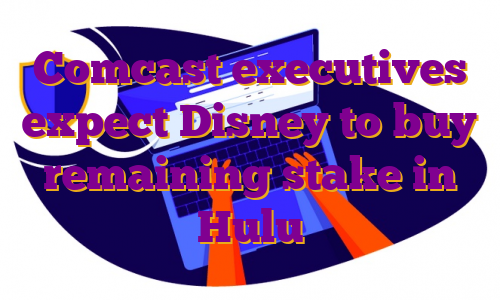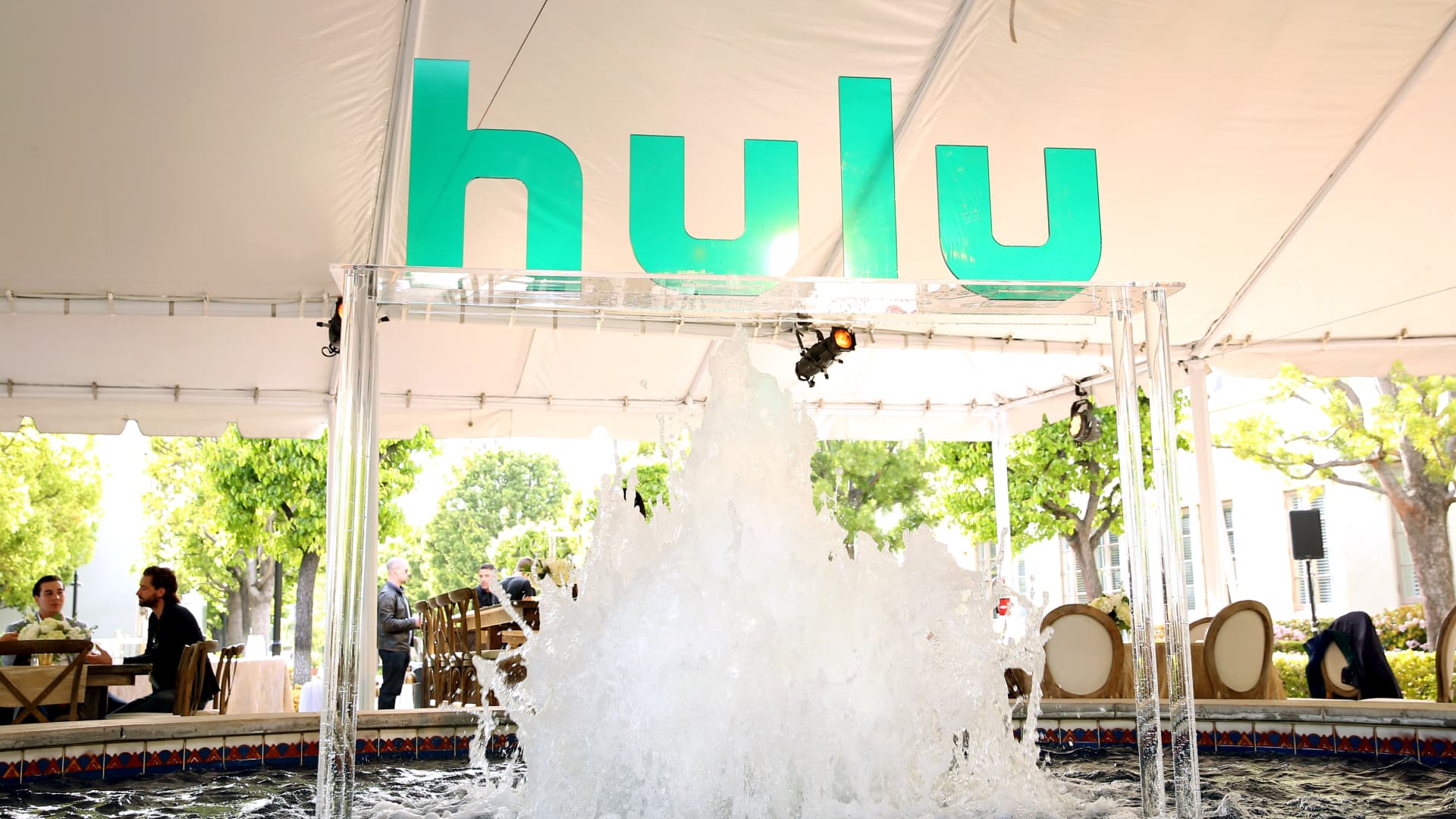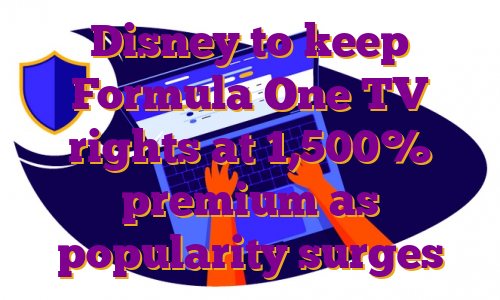AvatarSource: Walt Disney StudiosThe Na’vi return to the big screen this weekend as Disney looks to reignite interest in its newly acquired Avatar franchise, three months before the debut of the long-delayed sequel, “Avatar: The Way of Water.”Bringing the highest-grossing film of all time back to theaters has two purposes for Disney: drum up excitement for “The Way of Water” and fill a vacant spot on the theatrical calendar. The sequel is one of four due over the next decade.The rerelease of the original film is a sort of litmus test for whether audiences still want to visit its eco-conscious science fiction world.”Many questions have been asked about the film’s pop culture legacy over the past decade, but we also have to remember that James Cameron has been doubted before and proven many wrong,” said Shawn Robbins, chief analyst at BoxOffice.com.Directed by Cameron, the mastermind behind “Titanic” and “The Terminator,” “Avatar” opened in late 2009 to wide acclaim and massive financial success, eventually earning nine Oscar nominations. But it never captured the cultural relevance that Star Wars or the Marvel Cinematic Universe – both also owned by Disney – have enjoyed. Toy sales fizzled and cosplayers donning heavy blue makeup at pop culture fan conventions have become few and far between.”Naturally all eyes will be on the box office performance this weekend, as this may serve as an indicator of audience interest in the December release of ‘The Way of Water,'” said Paul Dergarabedian, senior media analyst at Comscore.”Avatar” captivated audiences more than a decade ago, in part because of the technology that Cameron helped develop to film and animate the movie. The film was shot using the Fusion Camera System, which was created by Cameron and cinematographer Vince Pace. Academy Award-nominated films like Martin Scorsese’s “Hugo” and Ang Lee’s “Life of Pi” also utilized this camera system.Previous systems used two cameras because filmmakers had determined that the human brain processed different information from different sides of the brain. So, one part of the brain would process the image’s movement, while the other would process what was happening in the image.Set more than a decade after the events of the first film, “Avatar: The Way of Water” tells the story of the Sully family.DisneyCameron and Pace devised a camera that could capture images the same way that a human eye does. The results were breathtaking — just look at the ticket sales. During its initial run, “Avatar” snared $2.78 billion globally. It added additional ticket sales throughout the years through rereleases, and reclaimed the box-office crown from “Avengers: Endgame” in 2021 when it was redistributed in China, topping $2.84 billion.The majority of tickets sold for the film were for 3D showings, which tend to be more expensive than regular tickets. These premium tickets alongside, an extended nine-month run in theaters, helped bolster “Avatar’s” total box-office haul.”We know that IMAX and other [premium format] screens are a major driver for the business now and going forward, but 3D’s popularity in North America waned quickly in the years after the first ‘Avatar’s’ original release,” Robbins said. “With very rare exceptions, 3D simply began to turn off many moviegoers for a variety of reasons — some of which filmmakers can control, but not all.”This “3D gold rush” in the wake of “Avatar,” as Dergarabedian calls it, led to an oversaturation of the market. Many of the 3D releases were conversions of movies that were not well suited for the format and, thus, quality declined and so did interest from audiences.While 3D films have fallen out of favor with domestic audiences, they remain exceptionally popular internationally – especially in China. Indeed, “Avatar” made the bulk of its money outside of the U.S. — a whopping $2.08 billion.”If I’m reading between the lines for this distribution plan, it seems like Disney and 20th Century Studios are gauging the state of 3D’s branding and they may use the box-office results to inform how ‘The Way of Water’ is handled,” Robbins said. “While Cameron will want to push the 3D version for fans who want to see it the way he filmed it for, it’s also hard to ignore the very large audience out there who has never become as enamored with the format as they have with other 2D premium viewing options.”Current estimates for the film’s rerelease range from $7 million to $12 million, with box-office analysts saying a figure in the mid-teens would be “huge.” It’s also facing stiff competition from the historical action epic “The Woman King,” which had a strong opening this past weekend and could be primed for a long, successful run at the box office.”It would be a massive understatement to say that there is a lot riding on the ‘Avatar’ brand and with at least three more filmed installments on the way,” Dergarabedian said. “The rerelease of the original this weekend will be the linchpin for what the future holds for the universe of Pandora and beyond.” .
Comcast executives expect Disney to buy remaining stake in Hulu
HuluRafael Henrique | SOPA Images | LightRocket | Getty ImagesThe future of Hulu continues to be an open question as Comcast and Disney still haven’t agreed on terms that will settle the company’s future ownership.But Comcast executives are planning on Disney buying them out — even if they’d prefer otherwise.related investing news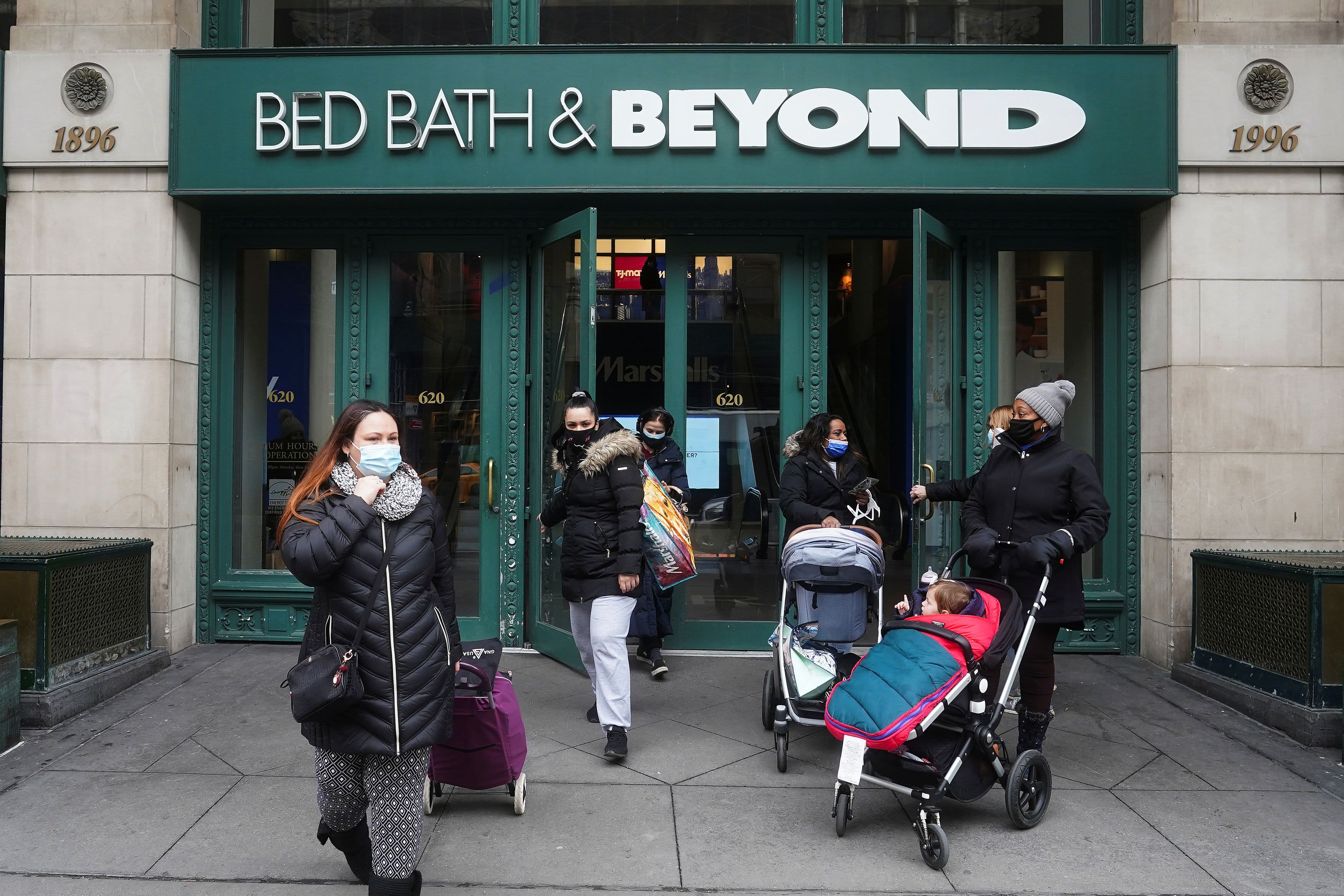
Bed Bath & Beyond’s turnaround is not enough to fix the struggling business, analysts sayDisney owns two-thirds of Hulu and has an option to buy the remaining 33% from Comcast as early as January 2024. Some analysts and industry watchers have speculated Comcast might try to buy Hulu from Disney rather than the other way around. Comcast Chief Executive Brian Roberts has been a long-time believer in Hulu and has historically pushed to keep the asset rather than sell, including in 2013, when Roberts nixed talks with DirecTV, according to people familiar with the matter.Comcast broached the idea of buying all of Hulu from Disney after Disney agreed to acquire the majority of Fox’s assets as part of a $71 billion deal that closed in early 2019, said two of the people, who asked not to be named because the discussions were private. Disney, armed with 66% ownership after acquiring Fox’s minority stake in Hulu, dismissed the idea, the people said.Blocked from buying all of Hulu, Comcast’s sustained belief in the business led to the unusual agreement the two companies reached in May 2019, with Comcast agreeing to sell Disney its minority stake as early as 2024. As part of that transaction, Disney guaranteed a sale price valuing Hulu at a minimum of $27.5 billion.That amount spiked earlier in the pandemic, giving Comcast some hope that Disney may choose to unload Hulu rather than pay Comcast a huge check for the remainder, two of the people said. Offloading Hulu would have allowed Disney to put its focus and money primarily on Disney+.”I think if Disney could roll back the clock today, I’m not so sure they would enter into that deal,” said Neil Begley, an analyst for Moody’s Investors Services. “Disney has this huge bill to pay in 2024 at a time when they’re already investing a lot of money into Disney+.”Acquiring Hulu from Disney would also supercharge Comcast’s streaming efforts. Hulu would instantly become Comcast’s flagship streaming asset, replacing NBCUniversal’s Peacock, which has added just 13 million paid subscribers in its nearly two years of existence. Hulu has 46.2 million subscribers. Peacock could live on as NBCUniversal’s free advertising-supported option. Peacock already has a free tier, with millions of users.Several top Comcast executives also think Hulu doesn’t make as much sense paired with Disney’s assets as it would at NBCUniversal, especially with the recent announcement that Disney+ plans to launch an advertising-supported tier in December, according to people familiar with the matter. Hulu has been Disney’s advertising-supported service for years. Disney could have positioned Hulu as its advertising play going forward, but CEO Bob Chapek has chosen to make versions of both Disney+ and Hulu with and without commercials.Spokespeople for Disney and Comcast declined to comment.Bob Chapek, CEO of the Walt Disney Company and former head of Walt Disney Parks and Experiences, speaks during a media preview of the D23 Expo 2019 in Anaheim, California, Aug. 22, 2019.Patrick T. Fallon | Bloomberg via Getty ImagesWhy Disney wants HuluNetflix’s slowing growth this year has led to an overall devaluation in the streaming sector. Comcast executives value Hulu “significantly higher” than $27.5 billion, and possibly up to $50 billion, one of the people said. That’s down from around $60 billion during the pandemic, the person said. If Disney sticks to its plan to buy out Comcast by January 2024, there’s still time for significant valuation fluctuations.Disney’s decision to lower Disney+’s 2024 guidance and its subsequent move to raise prices signaled to Wall Street that Chapek is no longer focused on adding subscribers at all costs.It’s sent a signal to Comcast that Hulu is likely in Disney’s long-term plans. Excluding Hulu with Live TV, Hulu’s average revenue per user is $12.92 per month. That’s nearly triple Disney+’s global ARPU of $4.35 and more than double Disney+’s ARPU in the U.S. and Canada ($6.27).Disney has built a streaming strategy around bundling Disney+, Hulu and ESPN+. While Disney raised Disney+’s price by 38% and ESPN+’s price by 43%, it only bumped its bundled offering of Disney+, Hulu (with ads) and ESPN+ by $1, from $13.99 to $14.99. That suggests Disney’s most preferred option is customers pay for the entire bundle, including Hulu.Media and entertainment companies have begun focusing on building profitable subscribers, rather than simply acquiring subscribers, in recent months as industrywide streaming growth has slowed. If Disney isn’t trading on Disney+ growth, Hulu becomes a more important part of its long-term strategy.”People are getting more judicious about their spend,” Kevin Mayer, Disney’s former head of streaming, said on CNBC last month. “There’s a renewed emphasis from Wall Street not just on the topline subscriber number but on the bottom line. I think that’s healthy.”Comcast vs. DisneyThere’s also the issue of competitive dynamics. A primary reason Disney held on to Hulu, and acquired other Fox assets, was specifically to keep them from Comcast, according to people familiar with the matter. Handing Hulu to Comcast would alter the balance of power in the media world and weaken Disney, then-CEO Bob Iger thought, the people said.Comcast has already taken steps to weaken Hulu, assuming Disney will keep it. Earlier this year, Comcast made the decision to remove content such as “Saturday Night Live” and “The Voice” from the streaming service and put it on Peacock instead. That change takes place later this month.Comcast has already earmarked some of the proceeds it’ll receive toward paying down debt. Comcast executives say they don’t need the cash and aren’t independently looking to accelerate a timeline, two of the people said.Dan Loeb’s desireDaniel LoebSimon Dawson | Bloomberg | Getty ImagesActivist investor Dan Loeb’s Third Point Capital bought a new stake in Disney last month, arguing Disney should not only complete its deal for Hulu, it should accelerate its timing.”We urge the company to make every attempt to acquire Comcast’s remaining minority stake prior to the contractual deadline in early 2024,” Loeb said in a letter addressed to Chapek. “We believe that it would even be prudent for Disney to pay a modest premium to accelerate the integration but are cognizant that the seller may have an unreasonable price expectation at this time (while noting the seller has already made the decision to prematurely remove their own content from the platform.) We know this is a priority for you and hope there is a deal to be had before Comcast is contractually obligated to do so in about 18 months.”Disney hasn’t publicly addressed the specifics of Loeb’s requests and hasn’t made a decision on whether it plans to speed up a timeline to buy Comcast’s stake in Hulu, according to people familiar with the matter.Disclosure: Comcast is the parent company of NBCUniversal, which owns CNBC.WATCH: Disney membership in the works and could offer exclusive content or experiences
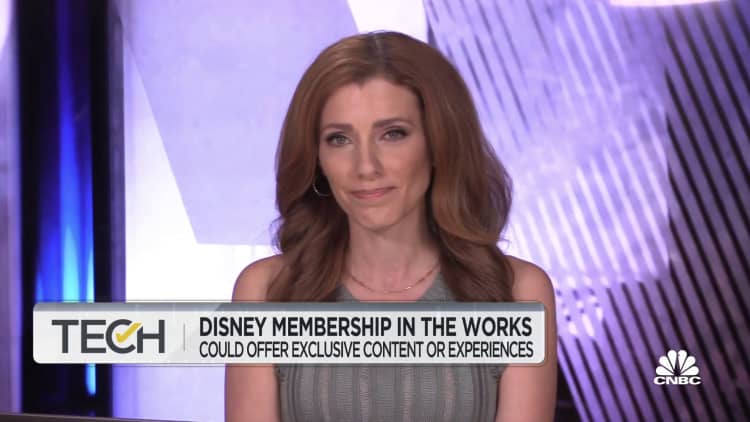 .
.
Disney to keep Formula One TV rights at 1,500% premium as popularity surges
Walt Disney Co. renewed its deal to show Formula One races in the US, paying at least a 1,500% premium to hold on to the sport as its popularity surges, according to a person familiar with the deal.
The company will pay between $75 million and $90 million a year for the rights as part of a three-year deal, said the person, who asked not to be identified because the talks are private. Disney had been paying about $5 million a year under its previous deal, the person said.
Disney will show most of the car races on the TV networks ABC or ESPN, but can also put events on the sports-streaming service ESPN+. Representatives for ESPN and F1 declined to comment.
F1, which has long been popular in Europe, has gained traction among US audiences in recent years. Viewership of races on ESPN jumped 56% in 2021 from a year earlier, and hundreds of thousands of people have attended races in Miami and Austin, Texas.
A Netflix Inc. series taking viewers behind the scenes of the sport has helped the streamer attract subscribers, and the service has held talks about buying the rights to air races. Amazon.com Inc and Comcast Corp. have also shown interest in F1, according to Sports Business Journal, which first reported the deal.
 Dear Reader,
Dear Reader,
Business Standard has always strived hard to provide up-to-date information and commentary on developments that are of interest to you and have wider political and economic implications for the country and the world. Your encouragement and constant feedback on how to improve our offering have only made our resolve and commitment to these ideals stronger. Even during these difficult times arising out of Covid-19, we continue to remain committed to keeping you informed and updated with credible news, authoritative views and incisive commentary on topical issues of relevance.
We, however, have a request.
As we battle the economic impact of the pandemic, we need your support even more, so that we can continue to offer you more quality content. Our subscription model has seen an encouraging response from many of you, who have subscribed to our online content. More subscription to our online content can only help us achieve the goals of offering you even better and more relevant content. We believe in free, fair and credible journalism. Your support through more subscriptions can help us practise the journalism to which we are committed.
Support quality journalism and subscribe to Business Standard.
Digital Editor
!function(f,b,e,v,n,t,s){if(f.fbq)return;n=f.fbq=function(){n.callMethod?n.callMethod.apply(n,arguments):n.queue.push(arguments)};if(!f._fbq)f._fbq=n;n.push=n;n.loaded=!0;n.version=’2.0′;n.queue=[];t=b.createElement(e);t.async=!0;t.src=v;s=b.getElementsByTagName(e)[0];s.parentNode.insertBefore(t,s)}(window,document,’script’,’https://connect.facebook.net/en_US/fbevents.js’);fbq(‘init’,’550264998751686′);fbq(‘track’,’PageView’); .
Disney+ will add cheaper plan—how other streaming services compare
On Friday, Disney+ announced that it will soon offer a cheaper ad-supported subscription plan. It’s the latest in a series of changes made by on-demand streaming service providers, including Netflix, Amazon Prime, HBO Max and Hulu.Pricing for the new tier hasn’t been announced yet, but it’s assumed to be cheaper than Disney’s current ad-free offering, which costs $7.99 per month. There is no launch date announced, either, but Disney says it will be available later this year.The move capitalizes on a growing market for cheaper ad-supported plans as Disney aims to grow its subscriber base of 118 million to better compete with Netflix, which has 222 million global subscribers, CNBC reported.How the major streaming services compareIn the last year, many of the major on-demand providers have hiked prices and introduced new, ad-free tiers that you might not be aware of. Here’s how the subscription plans stack up:
- Amazon Prime Video: On its own, Amazon’s streaming service is $8.99 per month, although you can get a student membership for $7.49 per month. The service is included with an Amazon Prime membership, which recently went up to $139 per year.
- Apple TV+: A monthly subscription is available for $4.99 per month after a free 7-day trial. You can also get three months free with the purchase of an Apple product.
- Disney+: Currently $7.99 per month, or $79.99 per year. You can also get the Disney+ bundle, which includes access to Disney+, ESPN+ and Hulu, for $13.99 per month. The bundle is $19.99 per month with the ad-supported version of Hulu.
- Discovery+: The ad-supported tier costs $4.99 per month and the ad-free tier costs $6.99 per month. There’s also a 7-day trial for new subscribers, as well as a discounted student plan, which costs $2.99 per month.
- HBO Max: An ad-supported tier priced at $9.99 per month was added last May. The ad-free version is $14.99 per month, with a 7-day free trial for new subscribers.
- Hulu: Basic options include an ad-supported plan for $6.99 per month and an ad-free version for $12.99 per month. The first month is free for new subscribers for either plan. Hulu also offers a live TV plan, which includes access to ESPN+ and Disney+. The Live TV plan includes both ad-free or ad-supported versions, for $75.99 per month and $69.99 per month, respectively.
- Netflix: Plans vary by the quality of the stream, with Basic, Standard and Premium plans costing $9.99 per month, $15.49 per month and $19.99 per month, respectively. The resolution options are 4K for Premium, 1080p for standard and 480p for Basic. These are new, recently raised prices, and will be effective by the end of March for current subscribers.
- Peacock: There are three tiers: a free ad-supported plan, a Premium ad-supported plan with additional content for $4.99 per month and an ad-free Plus plan for $9.99 per month.
- Paramount Plus: An ad-supported Essential plan was launched last summer for $4.99 per month, or $49.99 per year. The ad-free Premium version is $9.99 per month, or $99.99 per year. There’s also a Showtime add-on that adds monthly costs of $11.99 and $14.99, for the Essential and Premium plans, respectively. Both the Essential and Premium plans have a 7-day free trial period.
Sign up now: Get smarter about your money and career with our weekly newsletterDon’t miss: Billionaire Ken Griffin softens his anti-crypto stance: ‘I haven’t been right on this call’Disclosure: Peacock is the streaming service of NBCUniversal, parent company of CNBC. .

